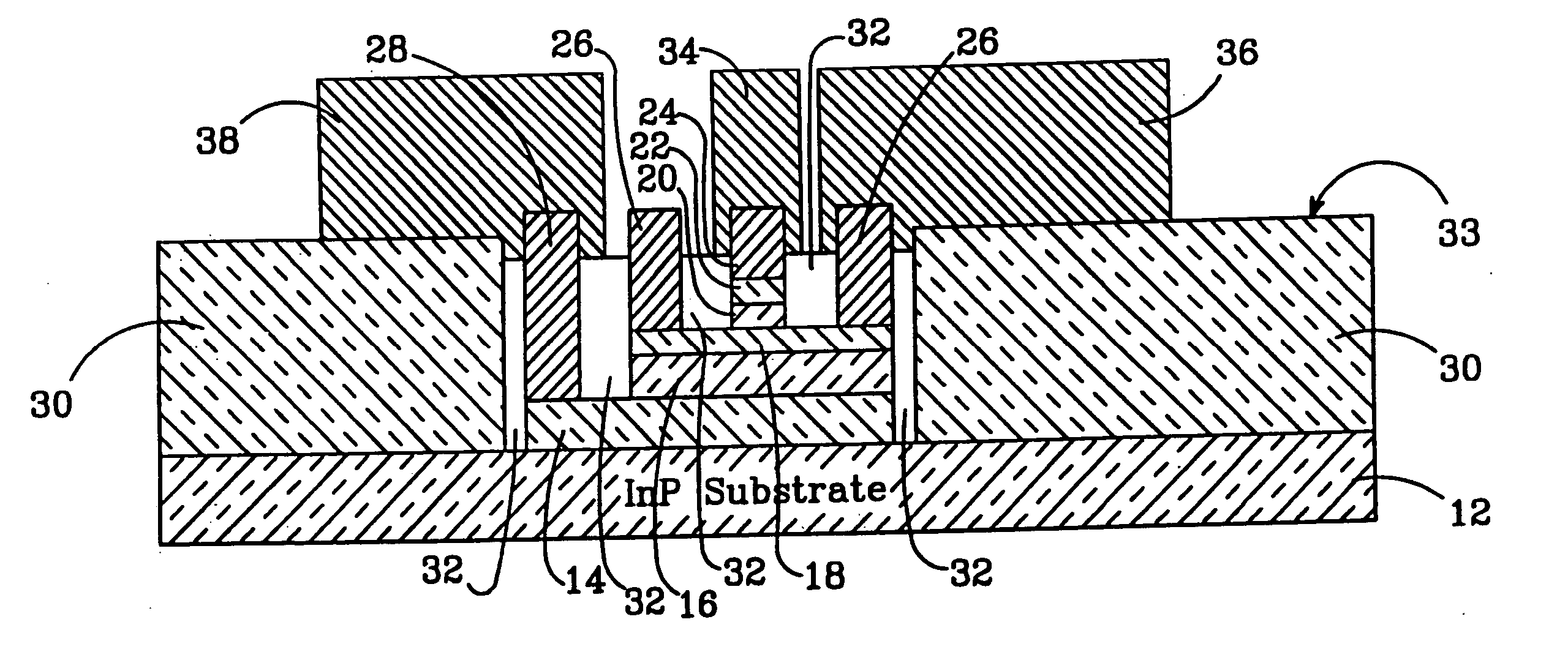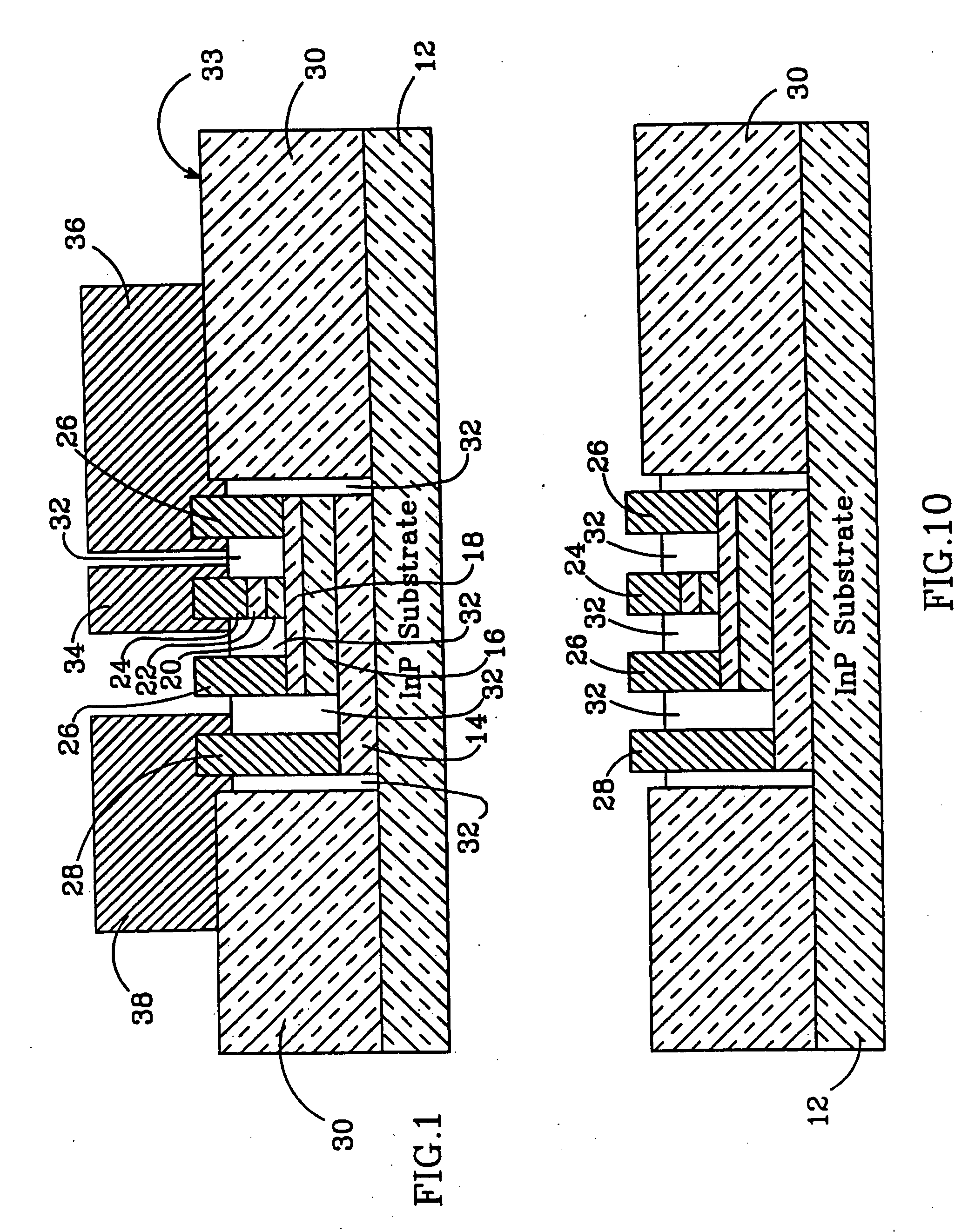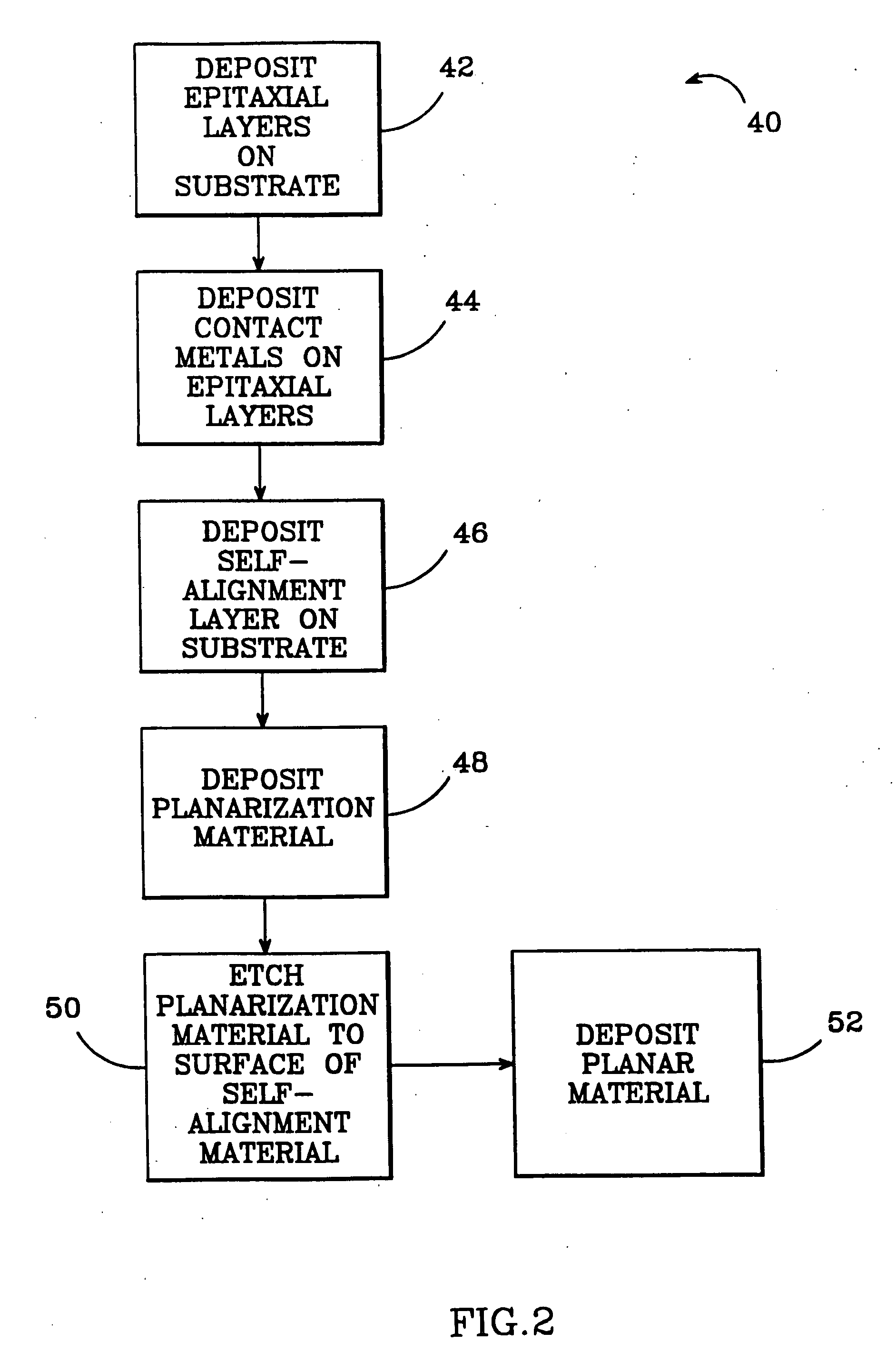Heterojunction bipolar transistor with dielectric assisted planarized contacts and method for fabricating
a bipolar transistor and dielectric assisted technology, applied in the field of semiconductor devices, can solve the problems of increased interconnection complexity, inability to reliably contact high-speed hbts, and reduced feature sizes, so as to achieve faster devices, less complicated fabrication, and more reproducibility and reliability.
- Summary
- Abstract
- Description
- Claims
- Application Information
AI Technical Summary
Benefits of technology
Problems solved by technology
Method used
Image
Examples
Embodiment Construction
[0029]FIG. 1 shows one embodiment of an HBT 10 according to the present invention. It is formed on an electrically semi-insulating InP substrate 12, which supports an InP sub-collector 14, with the substrate extending laterally beyond the sub-collector layer 14. The sub-collector 14 is heavily doped n+ so that it is substantially conductive. The sub-collector 14 is typically about 0.5-1 micron thick, with a dopant concentration of greater than 1×1019 / cm3. The purpose of the sub-collector 14 is to establish an electrical contact with the collector layer 16, which normally directly contacts the upper surface of the sub-collector 14. The collector 16 is typically about 0.2-1.0 microns thick, with a dopant concentration of about 1×1016 to 1×1017 / cm3. The collector layer is typically doped with silicon (Si) during the epitaxial growth.
[0030] A heavily doped InGaAs base layer 18 is included on the collector layer 16 opposite the sub-collector layer 12, with the base layer 18 covering mos...
PUM
| Property | Measurement | Unit |
|---|---|---|
| width | aaaaa | aaaaa |
| thick | aaaaa | aaaaa |
| thick | aaaaa | aaaaa |
Abstract
Description
Claims
Application Information
 Login to View More
Login to View More - R&D
- Intellectual Property
- Life Sciences
- Materials
- Tech Scout
- Unparalleled Data Quality
- Higher Quality Content
- 60% Fewer Hallucinations
Browse by: Latest US Patents, China's latest patents, Technical Efficacy Thesaurus, Application Domain, Technology Topic, Popular Technical Reports.
© 2025 PatSnap. All rights reserved.Legal|Privacy policy|Modern Slavery Act Transparency Statement|Sitemap|About US| Contact US: help@patsnap.com



